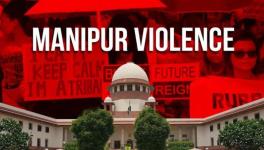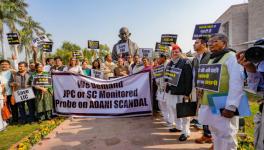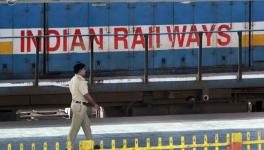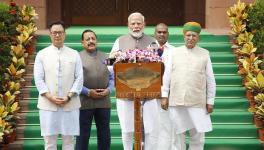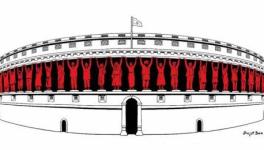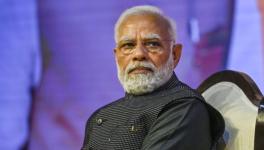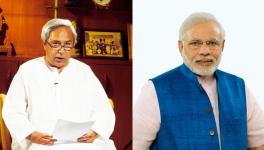EXCLUSIVE| ‘G-20 in India’: Making Sense of the Rs 25,000-Crore Project
Image for representational use only.Image Courtesy : NDTV
In December 2018, Prime Minister Narendra Modi announced that India would host the G-20 or (Group of 20 nations) Summit in 2022. At many levels, India is certainly not prepared for G-20 leadership, several analysts have pointed out time and again. Most of the concerns of these analysts, however, have remained restricted to India’s economic architecture.
On the other side, some analysts are brainstorming to predict how massy dialogues, possibly parallel to the proposed G-20 summit, will help India enhance its position economically. But the most apparent limitation for India is the shortage of infrastructure. In fact, a year before the official announcement of 2022 G-20, the government of India started giving shape to a project to build the world’s third largest convention centre in Delhi.
According to the public statements of senior government executives working on this project, the plan is to “achieve the vision of the Hon’ble Prime Minister to create a state-of-the-art and world class centre to promote MICE (meetings, incentives, conferences and exhibitions) activities in India which will help in attracting and promoting business and industry in India.”
However, official documents, accessed by NewsClick, present a grim picture of the project’s progress so far. The 2017 official order is regarding the approval of the project of development of Exhibition-cum-Convention Centre (ECC) at Dwarka, New Delhi, and the formation of Special Purpose Vehicle (SPV) for its implementation. The document says that the ECC and allied infrastructure in 3P or public–private partnership and non-3P would be built at an estimated cost of Rs 25, 703 crore, and is to be completed by 2025.
Furthermore, the implementation of this project is to be done in a phased manner. Phase-I would have budgetary support of Rs 2,037.39 crore –to be provided to the SPV over a period of three years, i.e., till 2020-21.
The payment of Rs 537.39 crore, according to the order document, is to be made to three particulars: (i) Rs. 442.39 crore as payment for transfer of 18.66 acres of land by Delhi Development Authority (DDA) to National Highways Authority of India (NHAI) and for development of connectivity to the project (ii) Rs 61 crore as payment for Railway land measuring 4,657 sq. mtrs. on payment basis and 9,000 sq. mtrs. on temporary basis for Metro connectivity, and the remaining (iii) Rs 34 crore had to be given to Delhi Jal Board for water and sewage infrastructure.
For the project, a new government company, as SPV, also had to be incorporated with 100% equity from government, with an initial paid-up capital of Rs 5 crore.
The document, signed by then Additional Secretary to Government of India, Shailendra Singh, further notes that the government-authorised Board of the SPV, comprising ex-officio directors -- Secretary, Department of Industrial Policy and Promotion (DIPP), Secretary, Department of Expenditure, Secretary, Economic Affairs, CEO, NITI Aayog, Additional Secretary and Financial Adviser, DIPPAdditional Secretary and Joint Secretary, Ministry of Housing and Urban Affairs, any other nominee of the government, and MD & CEO of the proposed SPV, “to approve revision in detailed cost estimates, break-up of quantities of project components, phasing of the project, change in scope etc. depending upon the requirement at various stages of the project […].” The document also authorised the SPV to raise debt/mobilise resources through land monetisation depending upon market conditions [emphasis].
After a month, in December 2017, the DMICDC (Delhi Mumbai Industrial Corridor Development Corporation) uploaded a thumbnail link to an online copy of an independent news article, on its official website. This confirms that budgetary support for phase-I was increased from Rs 2,037.39 crore to Rs 2,971 crore [– up by 45.82%.
The reasons behind the sudden hike still remain unclear. In fact, the government never admitted that they majorly revised the cost estimates for the project, indicating lack of transparency and signs of corruption at all stages of the project.
It is evident from “RFQ CUM RFP No. IICC/2018/03/001 dated: [NATIONAL COMPETITIVE BIDDING: 23nd March 2018]” that government was never strict about the budgetary figures. 1.1.7 sub-section of the document deliberates over the government’s intention to raise the loan without any transparency. The document prefers rounding off numbers. The exact loan amount, which was to be raised by SPV, has not been mentioned, let alone publicly releasing the revised break-up and explaining the reasons behind the inflated estimates.
Not only was a huge difference in the project’s budget observed but the statement of the then CEO and MD, DMICDC, Alkesh Kumar Sharma, too, seemed flailing. Sharma had “expressed confidence that the first phase will be over by the end of 2019 with a fully functional convention centre”. However, internally generated statistical data draw a different picture.
A set of internally tabulated statistical data available to NewsClick says, by contrast, that only 56.65% of phase-I-– outlined on a total cumulative figure-– could be completed. While the weightages for independent parameters are unnoticeable, the cumulative figure on each broadly categorised parameter is revealing and worrisome.
The constituent parameters include engineering [only 2.61% achieved], procurement [only 23.15% achieved], construction [only 29.88% achieved], and the project could achieve only 1% cumulative progress for ‘general’ parameter. Testing and commissioning, obviously, would be 0.00% and the accessed data confirm the reality, much against DMICDC’s initial projections.
Also, the document says that the Government of India, in 2017, had made DMICDC a knowledge partner for the ECC project on “a payment of an annual fee @1% of the yearly internal accruals, subject to a minimum of Rs. 5 crore and maximum of Rs. 10 crore per annum for an initial period of 10 years.”
NewsClick could not find any publicly available transaction audit report of IICC-ECC, Dwarka, by the Comptroller and Auditor General or CAG. A Right to Information (RTI) reply by India Audit & Accounts Department, additionally, confirmed our assumption. The Central Public Information Officer or CPIO further added that three transaction audits of DMICDC were conducted, i.e., for 2013-14, 2014-16 and 2016-17. According to CAG, no such audit was conducted after 2017, the year the project was kicked off.
The Ministry of Commerce & Industry, in an RTI reply, said that vision for development of IICC Ltd is to develop “India as a global MICE destination offering setting for international and national events, meetings, conferences, exhibitions and trade shows with road and Metro Connectivity to hold Mega Events of National Importance.”
CAG also admitted in a RTI reply that it had no information of any such audit of government projects done by Larsen & Toubro, the company that won the contract for the first phase on engineering, procurement and construction or EPC mode.
A Cauldron of Politics
The key reason behind grabbing this opportunity (to host the G20 summit) from the hands of Italy was to display India’s strength under Prime Minister Modi’s leadership, according to a highly placed whistleblower, who said: “The agenda behind bringing G-20 to India is to project PM Modi’s image globally.”
“Modiji has not been successful in securing a space in the front row of the ‘family photo’ of G-20 Leaders. As India’s global influence has been dwindling in several spheres, there was no alternative, except for India to host the summit,” the whistleblower said.
The position of guest G-20 leaders in the group photo is usually decided by the Chair and the first row is conventionally filled by state heads of countries considered important to the G-20 Chair. Yet, the US, a global hegemon, which also happens to be China’s stiff competitor, was not positioned in the second row in the 2016 G-20 meet in Hangzhou.
Wang Yizhi, director of the Institute of International Affairs at the Renmin University, then had also commented that Modi’s presence in first row of G-20 Hangzhou group photo showed his power, but Modi could not find place in the first row of the ‘family photo’ in successive G-20 summits.
Japan, despite being a key partner, did not invite Modi to stand in the front row of the 2019 G-20 Osaka summit while its Prime Minister Shinzo Abe’s selective ‘Twitter-following list’ includes Modi and current Defence Minister Rajnath Singh.
“G-20 presidency might boost India’s image on the global map. It is more of a fact that G-20 happens to be the world’s most influential economic multilateral forum. Also, it could be the moment for India to celebrate the 75th anniversary of its independence from colonial rule. Unfortunately, the aim of chairing the G-20 Summit in 2022 has less to do with enhancing India’s status than serving an internal political purpose ahead of State Assembly and 2024 General Elections,” said the whistleblower, adding that “the photos [to be] taken during the summit, most significantly the one with PM Modi in the middle of the first row, will be widely circulated across news media and social media to project him as the epicentre of the geopolitics[…].”
We have sent an email to IICC Dwarka. This story will be updated should the government provide a response.
The writer is an independent journalist.
Get the latest reports & analysis with people's perspective on Protests, movements & deep analytical videos, discussions of the current affairs in your Telegram app. Subscribe to NewsClick's Telegram channel & get Real-Time updates on stories, as they get published on our website.









